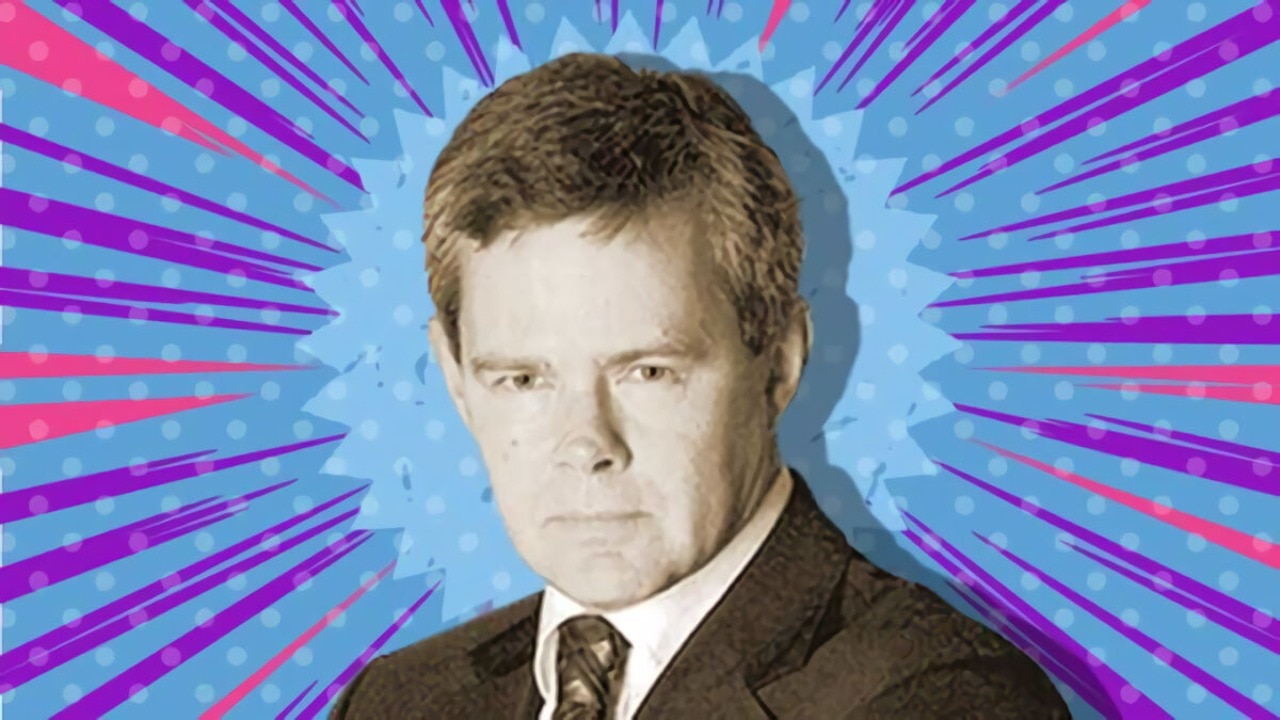Monsters of Rock: The West is talking the talk on critical metals, but it ain’t walking the walk
While the West talks the talk on critical minerals supply chains, new analysis from the IEA suggests it’s nowhere near walking the walk.

Stockhead
Don't miss out on the headlines from Stockhead. Followed categories will be added to My News.
Since 2020 critical minerals refining has become even more concentrated among the large producers, especially China
Experts warn little will change without policy intervention
Rio boss Stausholm announces exit, keeps picking up lithium on the way out
Global critical minerals supply chains are becoming even more concentrated years after the International Energy Agency sounded the alarm on the domination of battery metals by its key suppliers.
Coming as the world seeks to ween off China's dominance in the supply of metals key to the energy transition, defence and more, notably via the executive orders thrown down by Donald Trump in the heat of the US-China trade war, the IEA now says market forces will not address the imbalance.
This has heightened the risk of supply shocks, notably from trade disruptions. China has infamously weaponised its dominance in minerals largely ignored by Western countries like heavy rare earths, gallium and germanium to place export controls in recent years.
"Even in a well-supplied market, critical mineral supply chains can be highly vulnerable to supply shocks, be they from extreme weather, a technical failure or trade disruptions,” IEA executive director Fatih Birol said on the release of its 2025 Global Critical Minerals Outlook.
“The impact of a supply shock can be far-reaching, bringing higher prices for consumers and reducing industrial competitiveness.”
According to the IEA, some 55% of strategic minerals tracked by the group are subject to export controls.
Incumbent producers led by China in cobalt, graphite and rare earths and Indonesia in nickel, have flooded the market and kept a lid on prices.
The average market share of the top 3 refining nations in the key critical minerals tracked by the IEA rose from 82% in 2020 to 86% in 2024, with 90% of the supply growth in the aforementioned commodities added by China and Indonesia.

Where is it going from here?
The IEA projects we'll see some outsiders eat into this supply chain dominance over the next 15 or so years.
But the way we're going it's not much.
For rare earths, the top three mining countries (China, Australia and Myanmar) are projected to remain stable at 86% by 2040. Refining will reduce from 92% to just 82% controlled by the top three producers, mainly China.
On a general basis, the average share of the top three refiners across a swathe of commodities including copper, nickel, lithium, graphite, rare earths and cobalt is expected to decline to 82% in 2035.
That puts us, effectively, back where we were in 2020.
"Major risk areas for this broader group of strategic minerals include high supply chain concentration, price volatility and by-product dependency," the IEA report authors noted.
"China is the dominant refiner for 19 of the 20 minerals analysed, holding an average market share of around 70%. Three-quarters of these minerals have shown greater price volatility than oil, and half have been more volatile than natural gas."
Even with higher prices that could incentivise non-Chinese production, that could pose challenges to growing new markets, especially in the world of EV metals.
A sustained supply shock could increase global battery pack prices by as much as 40-50% the IEA says.
"Prolonged supply disruptions could widen cost disadvantages for other battery manufacturers vis-à-vis China, potentially hindering efforts to diversify manufacturing supply chains," the IEA warns.
Experts say it shows how crucial government action is.
"Even with the reduction in market concentrations from 2024 to 2035 across most refined critical minerals, the top 3 producers of refined rare earths, graphite and lithium control 92%, 90% and 85% of supply respectively," Commbank's Vivek Dhar said in a note.
"These anticipated outcomes underscore the need for urgent policy intervention to diversify critical mineral supply chains."
Rio's fresh path
One of the biggest supporters of that on the mining side is global giant Rio Tinto (ASX:RIO), which has been reinvented since Jakob Stausholm entered as CEO in 2021.
Stepping up from the CFO role in the wake of the Juukan Gorge scandal, the Dane has shown a steady hand in his efforts to revive trust with indigenous groups and foreign governments.
But he's also reshaped Rio's portfolio, showing far more daring than competitors like BHP in the company's efforts to tap into the energy transition.
Like BHP, Rio has focused on growing copper output in a bid to diversify from the iron ore market that has become the fulcrum around which the world's biggest miners delivered value for two decades.
But it has also made significant steps via M&A and R&D in lithium, where the miner could be the world's second largest producer by 2035, scandium and gallium.
Rio has also signalled an interest in other battery metals like graphite, a key focus of its near 20% investment in Malawi-focused graphite and natural rutile developer Sovereign Metals (ASX:SVM).
Even with Stausholm's decision to transition out of the CEO's role on Thursday, which will occur by the end of this year, the company's counter-cyclical play in the lithium market has continued to expand.
Having paid $10bn for Argentina producer Allkem and announced a US$2.5bn investment to build the 60,000tpa Rincon brine project in the same jurisdiction, it's this week established itself as a potential major player in global top 2 producer Chile. Rio is playing the long game, it doesn't think deficits will emerge in lithium until the end of the decade.
But it likes the idea of having a stranglehold on a market growing at a CAGR of 10% through 2040.
After announcing a partnership which will see Rio contribute up to US$880m to help Chile's State owned miner Codelco develop the Maricunga Salar, it was revealed as the 51% partner chosen by fellow Chilean State company ENAMI to develop the Altoandinos project.
“We are honoured to have been selected by ENAMI as the preferred partner for the Salares Altoandinos project, which has the potential to be a world-class lithium development," Stausholm said overnight on Thursday.
“We welcome the opportunity to develop our partnership with ENAMI, building on our interests in Nuevo Cobre and Salar de Maricunga, and to support Chile’s position as one of the world’s leading producers of minerals critical to the energy transition.”
Lithium prices have not been so rosy, with lithium carbonate falling to US$8350/t overnight according to Fastmarkets. Spot lithium carbonate was fetching more than US$80,000/t in late 2022. Spodumene concentrate, the main feedstock produced by WA miners, was trading at US$645/t, around four year lows.
Rio shares were 1% down on Friday morning.
The ASX 300 Metals and Mining index rose 1.17% over the past week.
Which ASX 300 Resources stocks have impressed and depressed?
Making gains
Adriatic Metals (ASX:ADT) (silver) +32.9%
West African Resources (ASX:WAF) (gold) +19.8%
Predictive Discovery (ASX:PDI) (gold) +19.7%
Chalice Mining (ASX:CHN) (PGEs) +19%
Eating losses
Coronado Global Resources (ASX:CRN) (coal) -32.9%
Liontown Resources (ASX:LTR) (lithium) -16.5%
Pilbara Minerals (ASX:PLS) (lithium) -13.4%
Mineral Resources (ASX:MIN) (lithium/iron ore) -9.7%
Adriatic Metals was the biggest gainer, after revealing an approach from Dundee Precious Metals for a cash takeover of the London and ASX listed owned of Bosnia's Vares silver mine. Sky News UK suggested the price could clock in at over £700m (A$1.46bn). Gold stocks were also in favour as prices broke above US$3300/oz for the first time since the US and China appeared to normalise trade relations.
Liontown fell from its frothy highs of last week along with other lithium producers as prices paid for WA spodumene dropped below US$650/t for the first time since 2021.
Coronado shares fell as reports emerged in The Australian's Dataroom section that barrel-scraping Czech billionaire Pavel Tykac could move to secure the struggling met coal miner on the sly by purchasing its debt. From highs of $2.34 in 2022, when the Russian invasion of Ukraine sent coal prices and miners sky high, its shares are now worth just 12c.
Originally published as Monsters of Rock: The West is talking the talk on critical metals, but it ain’t walking the walk


